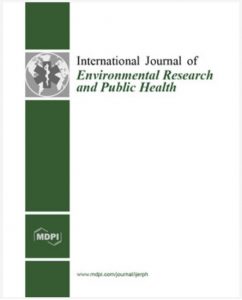Publications

Effects of a Massage Protocol in Tensiomyographic and Myotonometric Properties
Authors: Albert Perez-Bellmunt 1, 2, Noe Labata-Lezaun 1, 2, Luis Llurda-Almuzara 1, 2, Jacobo Rodriguez-Sanz 1, 2, Vanessa Gonzalez-Rueda 1, 2, Elena Bueno-Gracia 3, Derya Celik 4 and Carlos Lopez-de-Celis 1, 2
Affiliations:
- Faculty of Medicine and Health Sciences, Universitat Internacional de Catalunya, c/Josep Trueta s/n., 08195 Barcelona, Spain
- ACTIUM Research Group, 08195 Barcelona, Spain
- Faculty of Health Sciences, Unviersity of Zaragoza, 50009 Zaragoza, Spain
- Department of Physiotherapy and Rehabilitation, Faculty of Health Science, Istambul University-Cerraphpasa, Istanbul 34147, Turkey
Journal: International Journal of Environmental Research and Public Health - April 2021, Volume 18, Issue 8, Article no.3891 (DOI: 10.3390/ijerph18083891)
-
Field & Applications:
- Sport
- Injury prevention
- Treatment evaluation
Background: Pre-competition massage is usually used to improve athletic performance and reduce risk of injury. Despite its usual use, the effects of pre-competition massage on neuromuscular function have barely been studied. The aim of this study is to evaluate the effects of the pre-competition massage over the gastrocnemius neuromuscular function.
Method: The study is a quasi-experimental clinical trial thirty healthy athletes were enrolled in the study. Subjects received an intervention in one leg (experimental), consisting of a massage, and no intervention in the opposite leg (control). From all values of neuromuscular function, the following were analyzed: contraction time (Tc) and maximal displacement (Dm) by tensiomyography, and stiffness and tone by myotonometry.
Results: Main effects of pre-competition massage on neuromuscular function include a significant (p < 0.05) increase in Tc and Dm variables, as well as a reduction in stiffness and tone.
Conclusion: Data shows an increase in Tc and maximal radial displacement (Dm) variables, as well as a reduction in stiffness and tone. More quality studies are needed to draw clear conclusions about the effects of pre-competition massage.
Keywords: massage; musculoskeletal manipulations; sport; physical therapy; athletic performance; muscle tonus
The main objective of pre-competition massage should be the improvement of athletic performance and reduction of the injury risk. This would imply increasing muscle tone and reducing contraction time, in order to prepare the athlete for a competition situation. In this study, data shows an increase in Tc and maximal radial displacement (Dm) variables, as well as a reduction in stiffness and tone.


